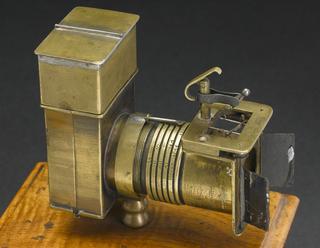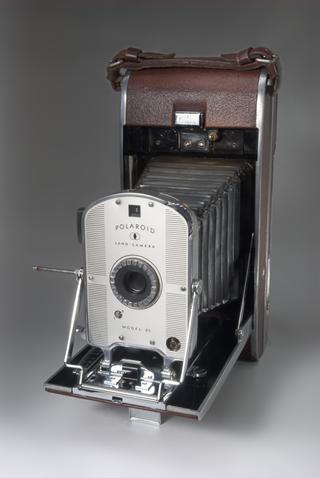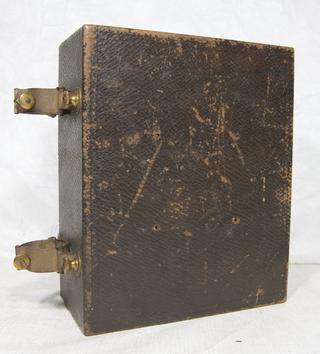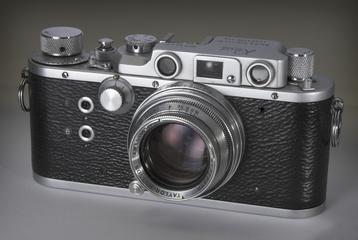
'Midg' Camera Used to Make the First Two `Cottingley fairies' Photographs in 1917
- maker:
- W Butcher and Sons














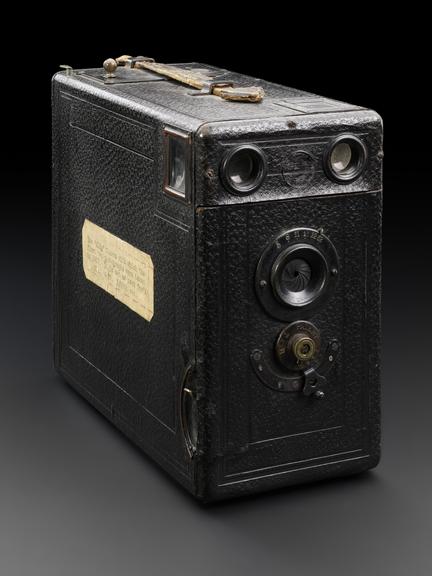
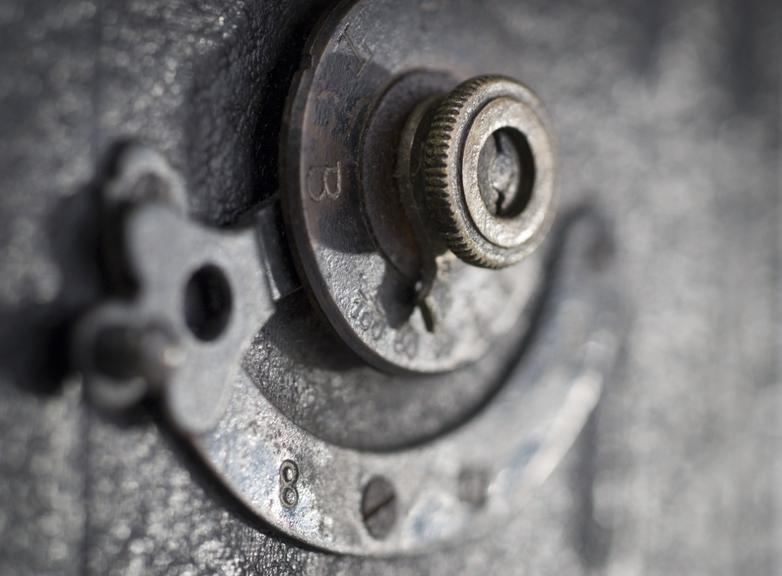

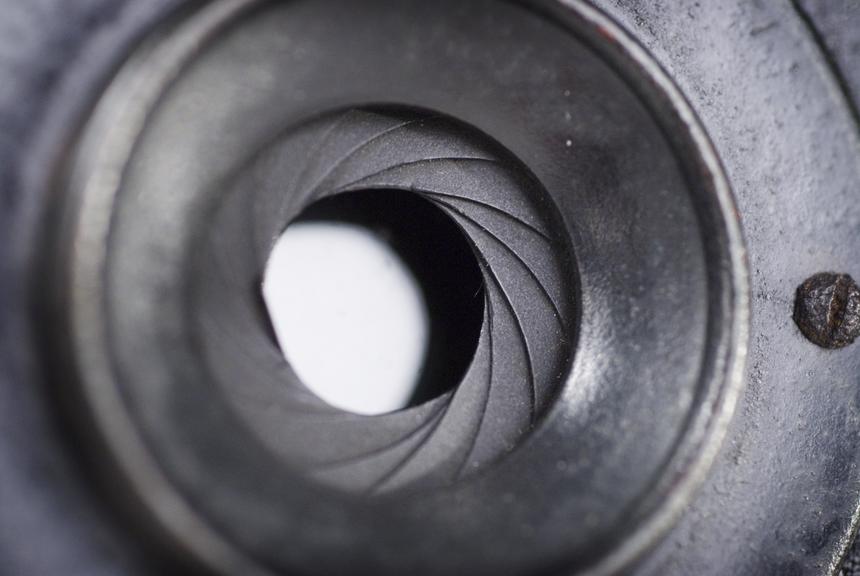
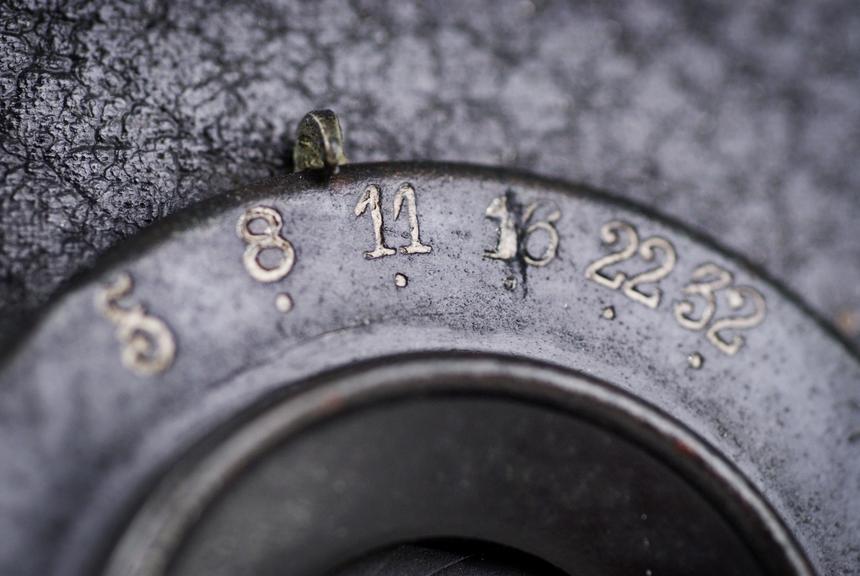


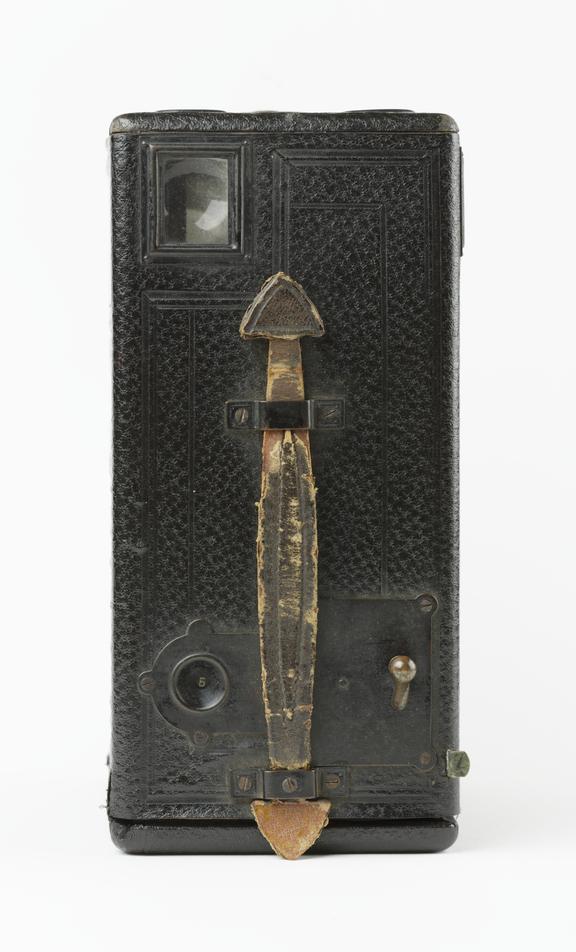
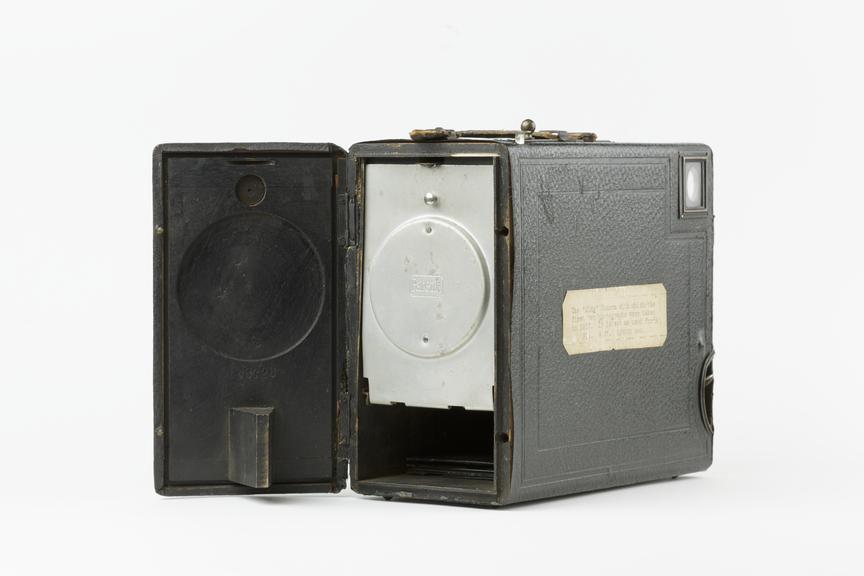

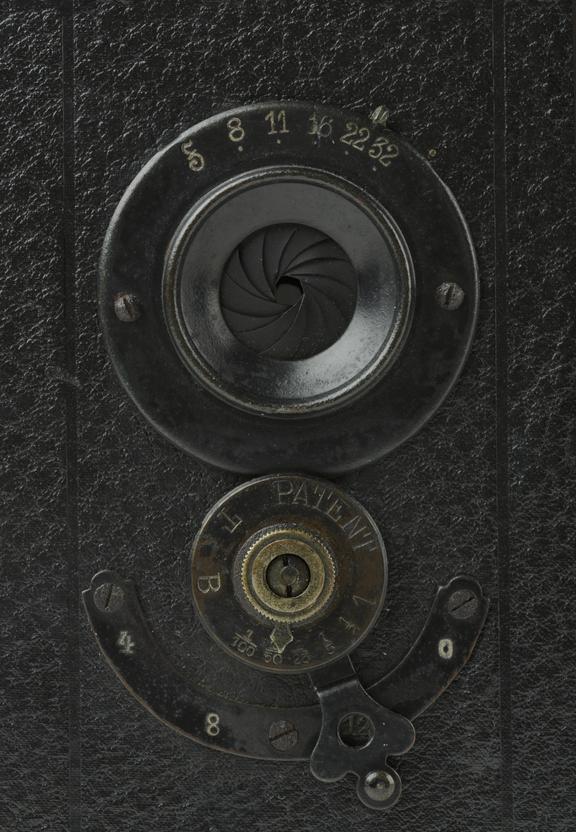

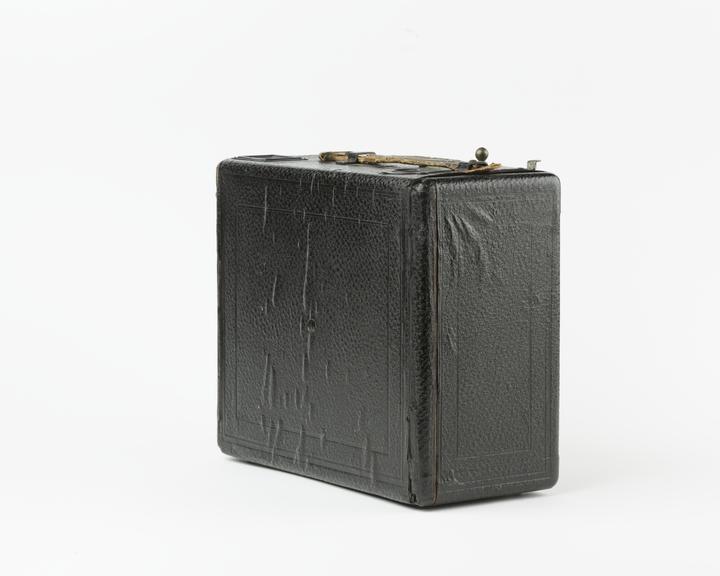
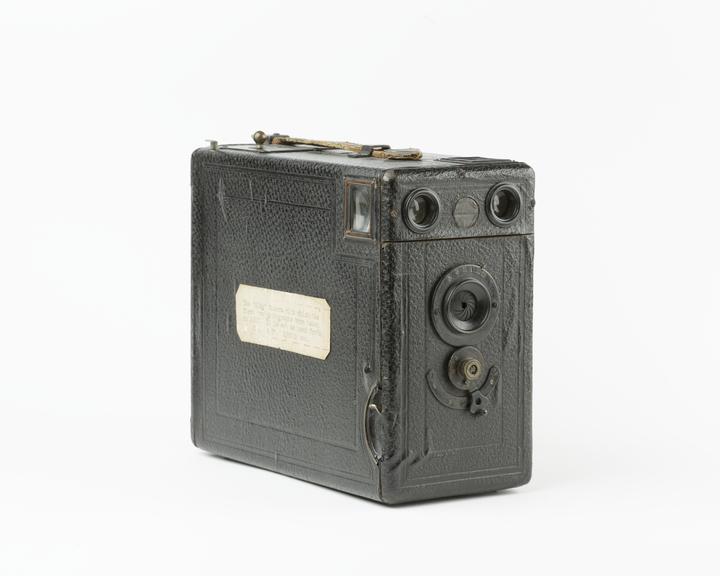
Quarter-plate `Midg' camera manufactured by W Butcher & Sons, London, 1902-1920, used by Elsie Wright and Frances Griffiths to make the first two `Cottingley fairies' photographs in 1917.
In the summer of 1917, Frances Griffiths and Elsie Wright (then aged 9 and 16) rambled through the bushes at the bottom of their garden in Cottingley in West Yorkshire, to reach Cottingley Beck. There, with a small quarter-plate camera, they took a photograph that miraculously revealed the existence of fairies dancing about in the foreground of a portrait of Frances Griffiths. They made a second photograph several months later, which revealed a single winged gnome greeting Elsie Wright.
In 1919, Wright’s mother visited the Theosophical Society in Bradford to attend a lecture on fairy life (which sincerely explored their possible existence). At its close, she presented the two photographs. This started a cycle of debates over the real existence of fairies living in the woods around Cottingley Beck. The photographs were exhibited at the Theosophical Society’s conference in Halifax, confirmed as genuine by photography experts, and corroborated by author and spiritualist Arthur Conan Doyle, who discussed them at length in an article on fairies for The Strand.
Not everyone was convinced, and so Griffiths and Wright were challenged to produce more photographs the following year. After some difficulty (the fairies being shy and reluctant to appear), they took a further three photographs (unobserved by others).
It is now known that the photographs were staged using cardboard cutouts, making this one of the most successful hoaxes of its era and a significant example of photographic forgery. Griffiths and Wright admitted that they had faked the images in an article in 1983, although both maintained that they had really seen the fairies.
Details
- Category:
- Photographic Technology
- Object Number:
- 1998-5138
- Materials:
- wood (unidentified), leatherette, leather, white metal (unknown) and glass
- Measurements:
-
overall: 187 mm x 102 mm x 212 mm, 1.15 kg
- type:
- quarter-plate camera and plate camera
- credit:
- The National Media Museum, Bradford
